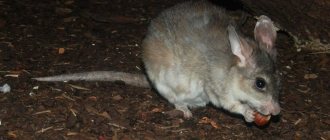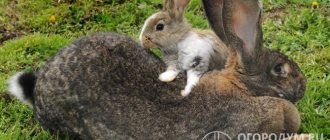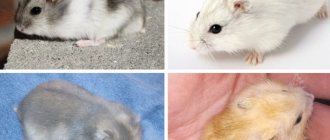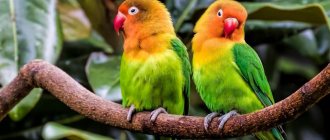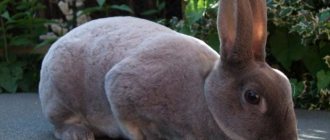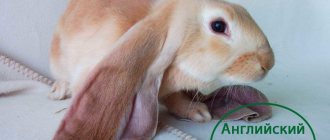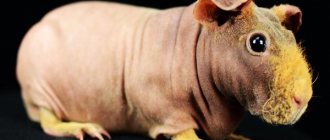Habitat
The common hamster lives mainly in the steppe and forest-steppe zones of Eurasia. Its distribution area is quite wide. Animals of this species are found in the northwestern part of China, in the east and south of Siberia, in Kazakhstan and the northern part of Mongolia.
The large Radde hamster prefers to settle on already developed lands in the steppes, which are rich in perennial grasses. Representatives of this species are found in the Caucasus, Stavropol region, Ciscaucasia, and also in Georgia.
Reference. The number of common hamsters has decreased significantly over the past 20 years, so programs have been developed in different European countries to protect these animals.
Large specimens for home keeping
Djungarian and Syrian hamsters are most suitable for living at home. They, like other breeds of this species, are clean. They wait out the entire daylight period in the hole and only come out at nightfall. Large hamsters of the Karbysh and Radde breeds remain wild, meaning they can bite. And given that this animal’s teeth are quite sharp, the consequences for the owner can be disastrous.
The Karbysh breed, settling next to humans, creates many problems. Summer residents really do not like these animals, despite their cute appearance. Just a couple of individuals can completely deprive the owner of hope for a good harvest. All the grains that are attractive to the animal will migrate from the garden to the personal pantry. The proximity of this species does not cause delight among gardeners, despite the fact that wild hamsters can feed on insects and destroy them in their summer cottage.
Rodents store large reserves of food in their burrows. The problem with keeping large breeds of hamsters is that they create winter reserves weighing from 15 to 20 kg. In an apartment it is quite difficult to provide such an opportunity.
It is necessary to care for large individuals belonging to the Syrian breed, taking into account their characteristics. The cage for them must be chosen in a large size. This also applies to the wheel in which the pet will run. For such animals, it is necessary to purchase a cage with bars, not a plastic one. The distance between the bars should be such that the animal does not stick parts of its body through the bars.
Most hamsters lead an active lifestyle, but only at night. The animal must run up to 12 km per day. It is quite difficult to provide such loads in a cage. That's why the wheel was invented. Special balls are also used. While in them, the animal is able to move around the apartment quite quickly.
In nature, in addition to grains, hamsters can eat worms and snakes. We are talking about wild breeds. In urban conditions, it is quite difficult to provide such a diet. Store-bought hamster food does not meet these needs. Domesticated breeds do well on plant-based foods.
These can be beets, lettuce, tomatoes, pumpkin, zucchini, cucumbers, carrots, dandelion grass. Caring for a hamster, which is a wild species, is quite complicated.
Care
The main question of interest to new owners is how to care for a hamster.
The task is actually quite simple. It is enough to keep the cage clean, wash the drinking bowl and add water on time, feed and love your pet. Let's learn about cage cleaning. The frequency depends on the filler that is used. If we are talking about sawdust, you will have to clean the tray every three days. When using granular (wood) litter, the cage is cleaned every five days. The longest-lasting one is corn filler. The cage is cleaned once every 7-10 days.
How is cleaning carried out? The old filler is removed, the tray is thoroughly washed with hot water and soap or powder. Ideally, children's products are used
Be sure to clean the hamster’s house, because a lot of interesting and important things from the pet’s point of view are stored inside. Remains of food, filler and other paraphernalia found in the cage will end up in the house
The feeder and drinker are washed without soap and rinsed thoroughly with hot water.
The tray is allowed to drain and wiped dry. Do the same with the rest of the cellular accessories. During cleaning, the Chinese hamster is placed in a jar with a tightly closed lid. Only holes need to be made in the lid for air so that the animal remains alive. This is not sarcasm; there have been cases when owners neglected this.
After the manipulations have been completed, fresh filler is poured into the cage, the house, feeder and drinking bowl are returned. The hamster can be planted from a jar.
The biggest hamster
The largest hamster in the world reaches 35 centimeters in length and a body weight of 0.7-1 kg. It is this rodent that is a pest in dacha areas; it is called a wild hamster. People try to fight him, but to no avail. He is resistant to poison and fearless. And even politicians can envy his arrogance. An animal can freely pass by you and go to your garden bed to gather supplies for the winter. If only he were alone, but there are many of them and they all fill their own pantries. The largest hamster digs a hole up to 8 meters long. There he stores food for the winter in specially designed compartments. No frost can reach it, taking advantage of this, in winter the rodent goes into hibernation. But the wild hamster looks like a small mouse compared to the capybara named Caplin Rous. This animal only looks like a hamster. Its height is 0.6 meters and its length is 1.4 m. The weight of an adult is 34-66 kg. This huge animal lives in South and Central America.
Popular Misconceptions
If you start wondering which hamster is the largest in the world, you will most likely come across the statement that it is a capybara. Capybaras are vaguely reminiscent of hamsters in appearance: they are large rodents covered with brown fur. But in fact, these animals have nothing to do with hamsters. Yes, they are also rodents and are sometimes kept as pets, but that's where the similarities end.
The capybara is the world's largest rodent. Capybaras belong to the capybara family and are naturally distributed in Central and South America. An adult can reach up to 135 cm in length and weigh up to 50 kg. Individuals were recorded weighing 91 kg. These rodents have webbed fingers. They feed on aquatic plants. These animals love water very much. They can even sleep in it with their nose sticking out to the surface. Life expectancy in captivity can reach 12 years. These animals are easily tamed and love communication and affection. The capybara can be taught to perform certain commands and tricks.
Features of behavior
A larger hamster may show character. If threatened, it is capable of attacking even larger animals. At the same time, he stands on his hind legs and clicks his teeth.
Here is the animal's diet:
- fruits and vegetables;
- wheat crops;
- plant roots;
- insects and vegetation.
Such a rodent often walks around with full cheeks, in which it carries supplies. Rodents begin stocking up on supplies at the end of summer. Chubby-cheeked hamsters can be observed in the dark as they are nocturnal animals.
Animals can swim too. They draw air into their cheek pouches and move through the water with the current. At the same time, swollen cheeks do not allow a person to sink to the bottom.
Some rodents, thanks to their caution and ability to defend themselves in natural conditions, live up to 4 years.
Lifestyle and habits
The largest hamster in the world is distinguished not only by its size, but also by its temperament. This is the only representative of the hamster family, which, if threatened, attacks not only representatives of its own species, but also larger animals. There are often cases when hamsters even attack people. At the same time, the rodent takes a fighting stance, standing on its hind legs, loudly clicks its teeth in warning and then attacks.
An adult representative of this species feeds:
- grain crops;
- vegetables and fruits;
- greens;
- plant roots;
- insects.
It often happens that smaller rodents also get eaten by animals of this species. The individual carries reserves in capacious cheek pouches, which it empties by applying strong pressure on them with its front paws. Food supplies begin to replenish at the end of summer. In the pantries you can find up to 25 kilograms of grain, each variety of which is stored separately. One day, more than 90 kilograms of supplies were removed from the hole.
The burrows of representatives of this species often reach 2.5 meters in depth. There can be up to 10 exits. All burrows include several storerooms and a nesting chamber. Since this representative of hamsters is a nocturnal animal, it spends most of the day without appearing on the surface. With the exception of the mating season, the animal leads a solitary lifestyle.
The mating season begins in April and continues until August. During this period, females are in burrows and wait for males to come to them. As soon as the male enters the female’s territory, he marks her and, depending on whether the female likes the smell, mating occurs. At the end of the act, everyone returns to their hole. Males visit females every 5-6 days.
The animal can swim well. To do this, the rodent takes air into its cheek pouches and moves in the water with the current. The air in the cheeks prevents the individual from drowning like an inflatable ring. Caution and the ability to fend for themselves allow some special ones to live up to 4 years in the natural environment, despite the fact that the average life expectancy is 3 years.
Wild (common) hamster
Representatives of this breed are distinguished by their large size compared to other breeds. One tail of an ordinary hamster reaches about 8 centimeters, and its height is about 30 cm. Such hamsters require special maintenance; the home must be spacious to be able to install a labyrinth or several rooms with storage rooms.
They are very rarely kept at home due to the difficulty of providing the necessary housing. These animals are very thrifty; in the wild, their reserves can exceed 15 kg.
Which hamster is better to get - Djungarian or Syrian?
| Size | Up to 10 cm. Weight – 40 g. | Up to 18 cm, that is, almost 2 times more. Weight – 100-140 g. |
| Color | Mostly gray, there are albinos with light fur and red eyes. | Most often golden, but there are white, black and brown. |
| One or two? | They are very sociable and live in friendly families in nature. Feel free to have several furry babies, but always have a second cage or carrier ready. No one is immune from quarrels! | Prefers to live alone and needs a separate territory. Couples rarely get along. |
| Cell | Despite its modest size, it needs spacious housing. Due to the high level of activity, a wheel and maze are required. | Also loves space. It is advisable to equip the cage with a wheel. |
| Smell | It is characterized by cleanliness. It has a moderate odor, characteristic of all rodents. Cleaning once a week is enough. | It has a sharp, specific smell, so the cage requires more frequent cleaning - 2-3 times a week. |
| Taming | Wild, difficult to get used to being handled, reacts poorly to affection. | Adapts faster to a new place and owner, loves to be scratched. |
| Health Features | He is prone to diabetes, so you should not feed him sweet fruits and dried fruits. | Given proper nutrition, he rarely gets sick. |
| Lifespan | With proper care - 3 years. It is a long-liver among this species of rodents. | Usually 2-2.5 years. |
Home equipment
The features of keeping an albino hamster are similar to the conditions for ordinary species of these rodents. Hamsters tolerate a solitary lifestyle very well, so they do not require companions. In addition, in nature they fight for their territory, and therefore have an extremely negative attitude towards their neighbors. This character trait should be taken into account when purchasing a rodent.
For the animal you need to purchase a spacious cage. The larger its size, the more comfortable he will feel. The minimum size is 30 x 50 cm. The rods must be metal, since hamsters quickly chew off plastic structures. The larger the animal, the larger the house it will need. It’s great if it has a large number of labyrinths and holes that the rodent really likes.
Methods for determining obesity
To understand whether a fat hamster is really overweight, it is enough to perform several manipulations. These include:
- carefully place the pet with its paws up;
- slowly feel the rib parts of the body.
In the case where the ribs protrude too much, a lack of grams can be diagnosed. In such cases, it is worth adding more high-calorie foods to your diet. However, if the ribs cannot be felt at all, then the situation is completely opposite - the animal needs to be helped to get rid of excess weight. When the weight is normal for the animal, the ribs of the hamsters can be felt individually, but they cannot be called protruding.
Consequences
Many people believe that fat pets cause affection because of their clubfoot, however, it is worth knowing that obesity in individuals of the hamster order can have serious consequences. These include:
- heart failure;
- thrombus formation;
- disruption of the functioning of the digestive system;
- other diseases.
The lifespan of hamsters is already not very long, and if extra pounds are added to the baby’s other problems, it begins to shrink altogether. Even if it does not cause life-threatening diseases, the pet’s well-being will be extremely disappointing.
Appearance
The body structure of individuals is quite specific:
- the ears are short and covered with coarse hair;
- feet are wide;
- the tail is quite thick at the base;
- the fingers are crowned with fairly developed claws - they provide the rodent with rapid movement in space.
From above, the body is usually monochromatic, the color varies from red to brown, the color of the abdomen is black. A pair of light spots can be seen on the sides of the belly, which are separated by an area of dark fur. Light spots are also located behind the rodent's ears, as well as on the sides of the head. The most rare individuals are:
- Black color.
- Black with light legs and chest.
In total there are about 10 subspecies of individuals.
How to determine if you are overweight?
To find out if your hamster is obese, you need to do the following:
- Take the animal in your hands and gently lay it on its back.
- Feel the ribs from the abdominal side.
If during the examination you notice that the ribs protrude and can be felt too clearly, this indicates that the animal is underweight and needs to be fed better. The inability to feel the ribs indicates that the pet has problems with excess weight. If each of the animal's ribs can be felt individually, but they do not protrude, we can say with confidence that the pet's weight is normal.
What if it's not really fat?
www.wallarthd.com/
If your beloved beautiful hamster suddenly gets fat, and neither exercise nor a healthy diet helps her, think about it! What if it’s not a matter of obesity at all, it’s just that a charming addition of 10-12 babies will soon appear in your cozy hamster house?
And most importantly: try not to overdo it in trying to make your pet's life better. You shouldn’t hide food so that he can’t find it, feed him nothing but cucumbers, or torment him with daily five-hour training sessions! After all, a little swelling never hurt anyone, right?
Let's start with something simple - if you are sure that your pet's diet is balanced, he gets enough vegetables and greens, and also regularly exercises on a wheel, then there is no need to worry. But be honest, don’t you spoil him with something tasty from time to time? Or sometimes you’re just too lazy to let him out of the cage and you hope that the hamster will entertain himself? Here you go. It seems it's time to take action.
To check concerns, contact your veterinarian. He will easily determine the danger of a hamster's weight to life, based on the age and breed of the pet.
So, for a Syrian hamster, a healthy weight is considered to be 12 grams for every centimeter of length. An adult healthy pet weighs about 200 grams. This figure is different for each breed. Dwarf and Djungarian hamsters are much smaller.
christinayong960207.files.wordpress.com
Don't forget that hamsters, like people, tend to lose weight as they age. The older the pet gets, the lighter it should be.
The most depressed hamsters
Each animal has its own characteristics in character. Without knowing them, it is difficult for the owner to understand what his pet wants and what his mood is. The hamster is no exception. Just like people, they can get depressed. It often occurs in pets in winter.
Hamsters feel anxious and restless. American scientists decided to use this property of rodents in order to understand the cause of depression in people and find ways to eliminate it. The study involved 53 female and 48 male dwarf hamsters under the supervision of a professor at Ohio Medical University.
The animals were limited in their access to daylight to simulate winter days. Scientists also conducted special tests for anxiety. The researchers placed the rodents in a large cardboard box and observed how long the hamsters stood near the walls for 1 hour. This is exactly how restless hamsters behave.
In addition, the animals were given a sweet drink for several days. If a rodent did not drink it, it was considered “depressed.” As a result of such an experiment, it was found that hamsters are susceptible to seasonal depression.
The most depressed hamster is considered to be a rodent named Chmurka. The facial expressions and behavior of this animal speaks for itself.
Record holders for size
The largest hamster in the world is the capybara Caplin Rose. The owner of the giant pet is Melanie Typaldos. The weight of the animal is 64 kg, and the body length is 1.4 meters. Melanie named her pet after the huge rodent from the fairy tale “The Princess Bride.” Typaldos claims that the animal is very friendly and plays with children and even dogs.
A hamster's favorite pastime is to swim in the river, and then eat ice cream and fall asleep. Melanie even writes a blog about her pet, which is popular.
Tags
What hamsters are considered a large hamster is a hamster. a fat hamster in the common hamster of the Hamster family. a giant hamster the size of an ordinary hamster is a common hamster thick ordinary hamsters with Dog breeds Cat breeds Rodent breeds Dog breeds Cat breeds Chew breeds new Dog breeds Cat breeds Rodent breeds Dog breedswith a hamster.large hamster isWeight of the hamster Raddelarge hamsters talk about hamsters
necessary conditions for dogs keeping cats at home dark description the difference between cats read
Brief description of breeds
Golden homa
It is also often called Syriac. Currently, this breed holds the palm in popularity. Rodents are quite large (half the size of a mouse), but not so large that they can be entrusted to a small child.
The color of the fur matches the name of the breed: medium-length fur is usually reddish, golden or tan. There are black, white, spotted and even apricot colors.
Fiery beauties prefer privacy to the noisy company of relatives, but at the same time they are always happy to communicate with family members, quickly get used to their hands and love affection.
Angora breed
It is not difficult to guess that this breed of hamster belongs to the long-haired category. His middle name is real. Even in photos the animals look great, but in real life they act like a king.
This species is descended from Syrian hamsters and gets its name from its lush coat, similar to Angora cats. These rodents have nothing to do with angora.
Unlike their golden ancestors, they are distinguished by a wide variety of colors: white, cream, silver, tricolor. Surprisingly, men have much longer hair than women.
Dzungarian breed
Dwarves among their fellow tribesmen. The coat is painted in a smoky gray color with a clearly defined dark stripe along the back and a characteristic diamond on the forehead. The ears are black, the paws are white. Average length 10 cm.
Unlike previous species, hamsters are independent; they do not particularly like human attention. They are distinguished by their eccentric character: they often fight in groups. Therefore, it is best to keep them alone or popular in a group of their age from birth. They are mainly nocturnal.
Campbell
Another one of these little ones. They are often confused with Dzungarians, although the differences are visible at first glance:
- firstly, the color of this breed of hamster is yellow-brown;
- secondly, the stripe on the back and the diamond on the forehead are not clearly drawn.
They also prefer solitude, so this species is more interested in observing their lives and habits than in communicating.
Sungur breed
Distinctive features are large bulging eyes, a bulbous nose, an arched croup and hairy paws, for which the hamster received the nickname “fur paws.”
But the breed is unique not only for its unusual structure, but also for its ability to change color depending on the season: the less hot and sunny it is, the lighter the coat becomes.
Roborovsky breed
Quite a rare breed, although many would like to have these incredibly active, lively and cheerful children. At one time, it practically disappeared from the face of the earth, but American scientists managed to restore and even increase the population.
The true representatives of the species are truly tiny creatures and are considered the smallest, not counting Taylor's dwarf, among all species of domestic hamsters. It is best to keep rodents in pairs or even small family groups.
The coloring is typical for deserts and semi-deserts: white belly, pink back, black ears with a white border.
Taylor's dwarf
This is actually a wild breed, but adapts well to life in captivity. They enjoy communicating with people and feel quite comfortable in a cage - they prefer a well-fed and calm life.
The size is small - only 5cm.
By the way, such sizes require special painstaking selection of the cage, but it is better to keep babies in glass or plastic containers, which will be difficult for them to chew.
Ordinary
At most, it is not even Gulliver among the entire family of hamsters: the average height is 25 cm. Despite the ordinary and ordinary name, the hamster is distinguished by its bright and contrasting color:
- red back;
- black belly;
- on the face and sides there are two light dots separated by a black stripe.
Pets come across a calmer coat - black or black and white.
Yin Yang
It is difficult to say that black and white animals are a separate breed of hamsters.
For example, albinos can be found among the Youngs, Syrians and Campbells. In nature, white rodents are easy prey for predators, so there are few of them in their natural habitat. The snow-white color is highly valued among breeders.
Black hamsters are as rare as white ones. Charcoal hamsters are usually born in litters of the Syrian or Dzungarian race.
Siberian animal
Another breed of fur paws. Externally, Siberians are very similar to Djungarians and also change their dark color to lighter in winter. Rodents are very small and active, so keep them in a glass terrarium. As a last resort, a cage will do, but with a very small intersection gap.
Roborovsky
Roborovsky are the unique smallest individuals of dwarf hamsters. Adults grow to four to five centimeters. They have long legs and, unlike other hamster breeds, do not have stripes on their spine. Their character is quite active. These are nimble and independent rodents. They cannot sit in one place. It is impossible for Roborovsky to run out of the cage. Then it is very difficult to catch him.
Solitary confinement is not suitable for this species, since rodents are very sad and do not live out their “hamster life” for long. In nature, they live in small communities. The Roborovsky hamster should live in a group or in pairs. Being in a group, these mini-hamsters feel great, and watching their life in a cage becomes even more interesting.
Breeds of wild hamsters
- Karbysh
An adult hamster reaches a length of up to 35 cm and a weight of up to 1 kg. A very harmful hamster, he likes to live near people and is a frequent visitor to gardens. This hamster is protected in many countries: Poland, Germany, Ukraine, Belarus, France, Belgium.
Wild hamster - carbysh
- Gray hamster
Listed in the Red Book. An adult grows up to 13 cm in length. Habitat: steppes, semi-deserts.
Gray, wild hamster
- Hamster Radde
This species is widespread in the North Caucasus, Georgia, and the Stavropol Territory. It causes great harm to agriculture and is also a carrier of the dangerous infection tularemia. Dimensions up to 28 cm.
Hamster Radde
- Eversman's hamster
A small hamster, slightly larger than a rat, up to 16 cm. Lives in Kazakhstan, the Volga region, and Trans-Urals. In captivity it is well tamed. In some regions of Russia, such a hamster is listed in the Red Book.
Photo of Eversman's hamster
- Mongolian hamster
A small hamster, slightly larger than a mouse, up to 15 cm. Belongs to the Eversmann hamster species. This hamster has a light brown color. It lives in China and Mongolia.
Mongolian hamster
- Barabinsky hamster
This individual belongs to the gray species of hamsters. It got its name in honor of the Barabinsk steppe of the same name. Usually such hamsters are small in size, up to 13 cm.
Barabinsky hamster
- Daurian hamster
This hamster is the size of a mouse. Lives in Mongolia and Siberia. In size, up to 13 cm.
Daurian hamster
- Brandt's hamster
Transcaucasian hamster. The length of the individual is up to 18 cm. It lives in Turkey, Lebanon, Israel and the Eastern Ciscaucasia.
Brandt's hamster
- Hamster Sokolov
Named in honor of zoologist V.E. Sokolova. Body length up to 114 cm. Lives in Mongolia and China.
Hamster Sokolov
- Chinese hamster
They are classified as dwarf hamsters, up to 12 cm. Such hamsters have a characteristic elongated body and longer legs. Found in China and Mongolia.
Chinese hamster
- Newton's hamster
Lives in northern Bulgaria and Romania. Body length up to 17 cm. Life expectancy about 2 years.
Photo of Newton's hamster
- Taylor's Hamster
Belongs to dwarf hamsters, up to 8 cm. Habitat: North America. Minks are built in the grass.
Taylor's Hamster
- grasshopper hamster
Body length up to 13 cm. Habitat: Canada, North America. An interesting feature is that from time to time they can sit down and emit a short high-pitched squeak for 1-2 seconds.
grasshopper hamster
- Siberian hamster
Refers to dwarf hamsters. Habitat: Eastern Siberia.
Siberian hamster
- Tibetan hamster
The body length is up to 11 cm. The color of the fur coat is dark gray. Habitat: Western China.
Tibetan hamster
- rat hamster
The body length of such a hamster reaches up to 25 cm. It lives in Northeast China, the Korean Peninsula, Primorsky Krai, and the Jewish Autonomous Region. The color is predominantly gray-brown.
rat hamster
- Short-tailed hamster
Lives in the mountainous regions of Tibet, South Asia, China. Body length up to 10 cm.
Short-tailed hamster
- Canese hamster
This hamster measures up to 10 cm in size and weighs up to 100 grams. Habitat: China.
Canese hamster
- Long-tailed hamster
Lives in the southwest of Transbaikalia. Length – up to 12 cm. Burrows are built among the rocks.
Long-tailed hamster
As you can see, there are simply a huge number of hamsters living on Earth. We hope that after reading this text you have become a little more familiar with these interesting animals.
Great article 12
